Quercus virginiana (Live Oak, Southern Live Oak)
Botanical Information
| Family | Fagaceae |
| Genus | Quercus |
| Species | virginiana |
| Category | Woody |
| Type | Tree (evergreen) |
| Origin | It is native to coastal plains and woods from Virginia to southern Florida and Texas. |
Details
| USDA Hardiness Zone | 8 - 10 |
| USDA Hardiness Ref. | |
| Canadian Hardiness Zone | Requires cold season protection under glass. |
| Canada Hardiness Ref. | |
| RHS Hardiness Zone | H2 - H5 |
| RHS Hardiness Ref. | |
| Height | 12 - 24 m |
| Spread | 18 - 30 m |
| Flowering Period | March, April, May |
Description and Growing Information
| General Description | A large, long-lived, evergreen oak that typically grows 12 - 24 m tall with a short trunk, low branching and a broad-spreading rounded crown. |
| ID Characteristic | This species has been placed on the IUCN Red List as least concern. |
| Shape | A short trunk, low branching and a broad-spreading rounded crown. |
| Landscape | A shade tree for large lawns or parks. |
| Cultivation | Grow in average, medium to wet, well-drained soils in full sun. Plant tolerates a wide range of soils. |
| Notable Specimens | Harry P. Leu Gardens, Orlando, Florida, United States of America. Bok Tower Gardens, Lake Wales, Florida, United States of America. |
| Habitat | Found at an altitude of 0-200 m. |
| Bark/Stem Description | A short trunk, low branching and a broad-spreading rounded crown. |
| Flower/Leaf Bud Description | Yellowish-green |
| Leaf Description | Elliptic to obovate, leathery, shiny dark evergreen green leaves to 12 cm long with smooth edges. |
| Flower Description | Monoecious yellowish-green flowers in separate male and female catkins appear in spring. |
| Fruit Description | Showy ellipsoidal acorns to 3 cm long, with scaly cups that extend to approximately 1/3 the acorn length. |
| Texture Description | Acorns are valued food for a variety of wildlife. |
Photographs
Quercus vriginiana, form, Harry P. Leu Gardens, Orlando, Florida, United States of America.
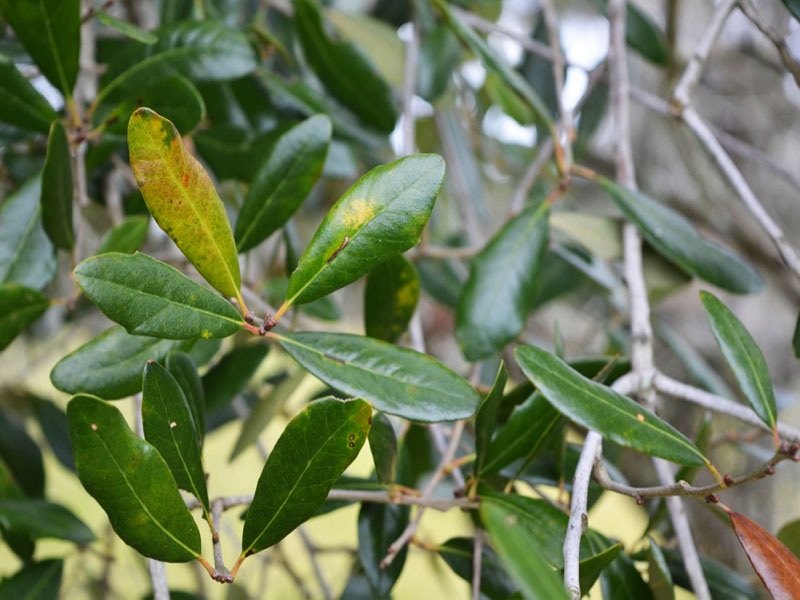
Quercus vriginiana, leaf, Bok Tower Gardens, Lake Wales, Florida, United States of America.
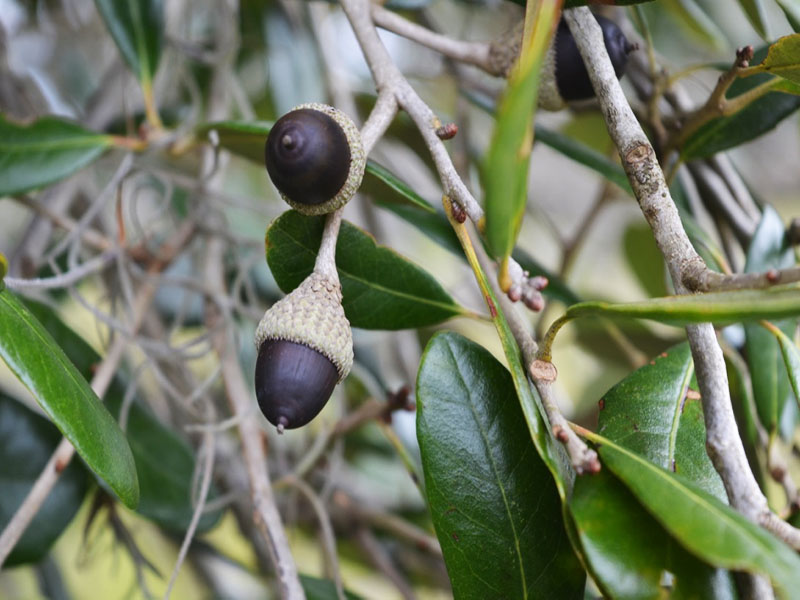
Quercus vriginiana, fruit, Bok Tower Gardens, Lake Wales, Florida, United States of America.
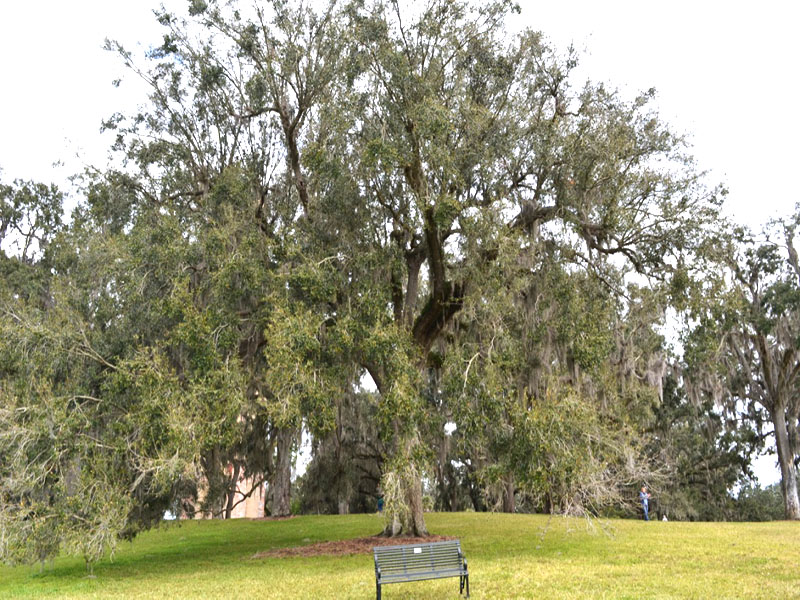
Quercus vriginiana, form, Bok Tower Gardens, Lake Wales, Florida, United States of America.
Quercus vriginiana, form, Harry P. Leu Gardens, Orlando, Florida, United States of America.
Quercus vriginiana, bark, Harry P. Leu Gardens, Orlando, Florida, United States of America.
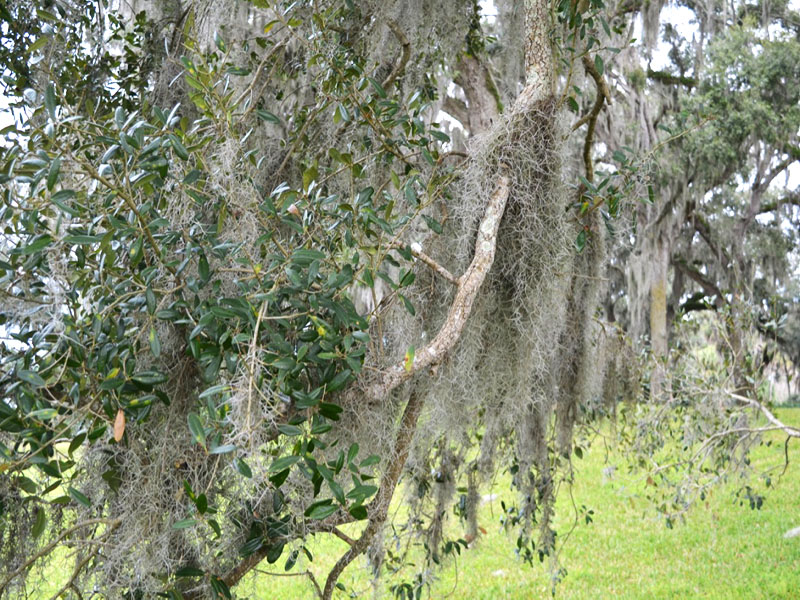
Quercus vrigniana, form, Bok Tower Gardens, Lake Wales, Florida, United States of America.
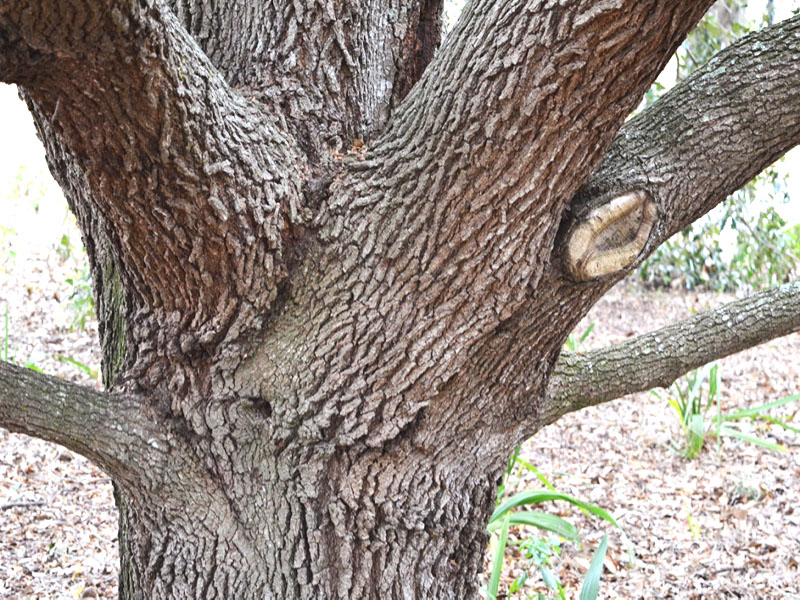
Quercus vriginiana, bark, Bok Tower Gardens, Lake Wales, Florida, United States of America.
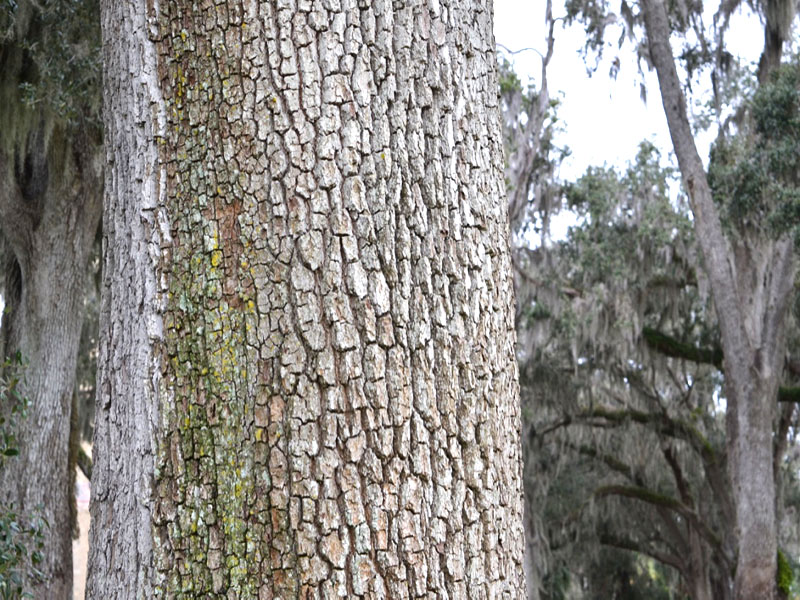
Quercus vriginiana, bark, Bok Tower Gardens, Lake Wales, Florida, United States of America.